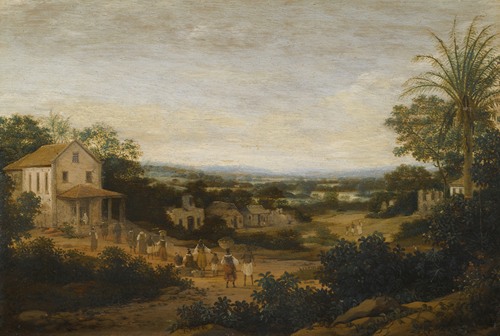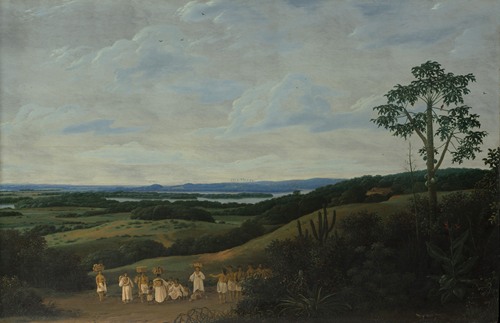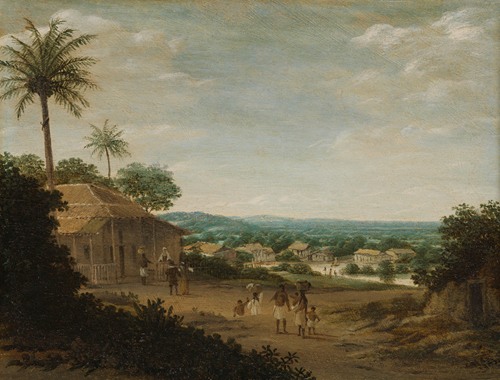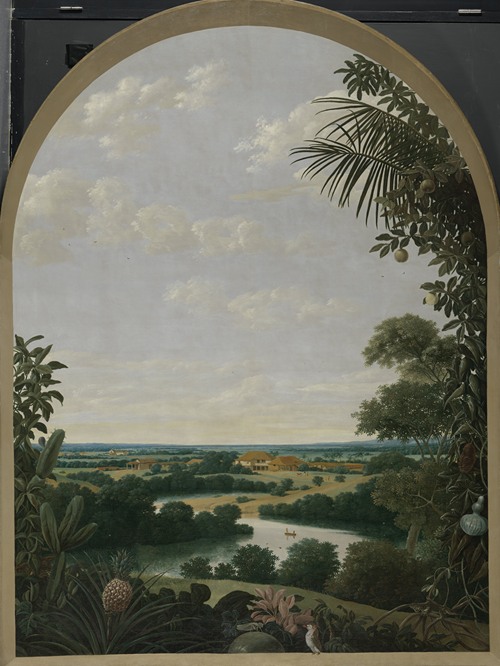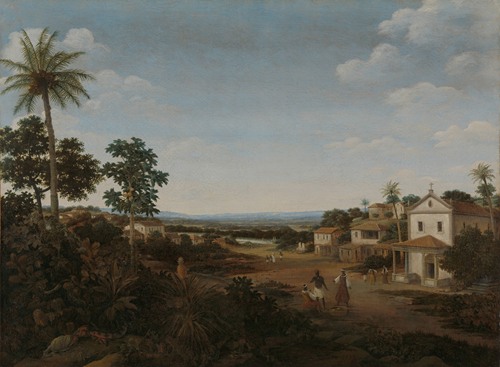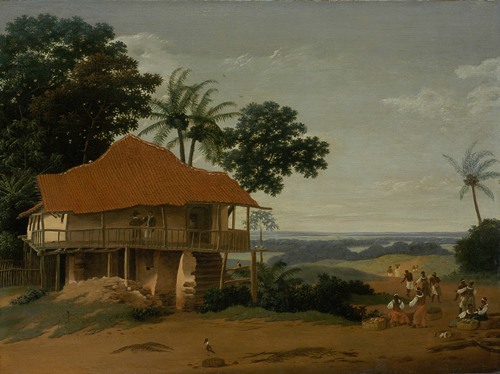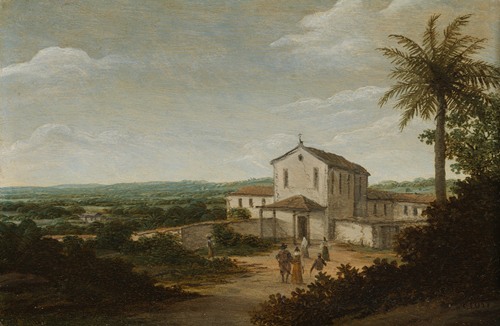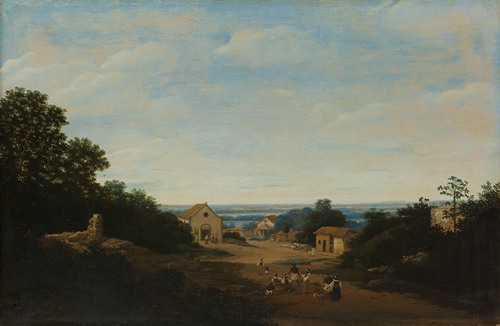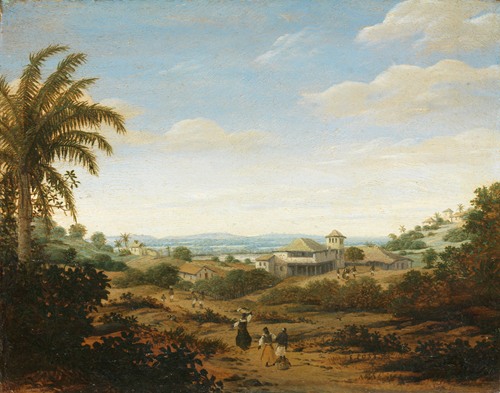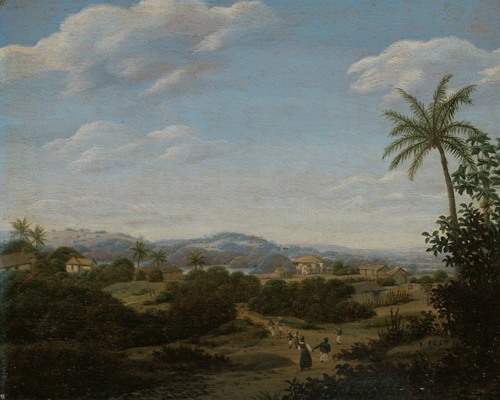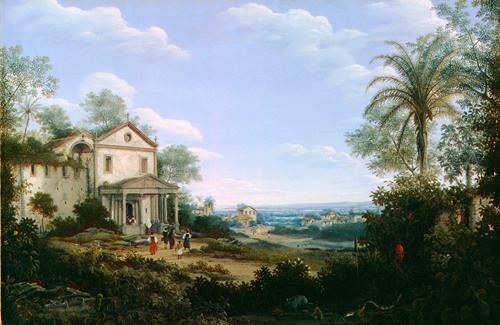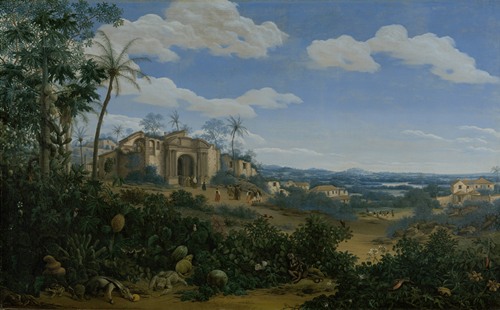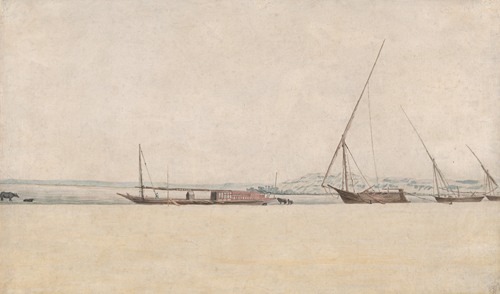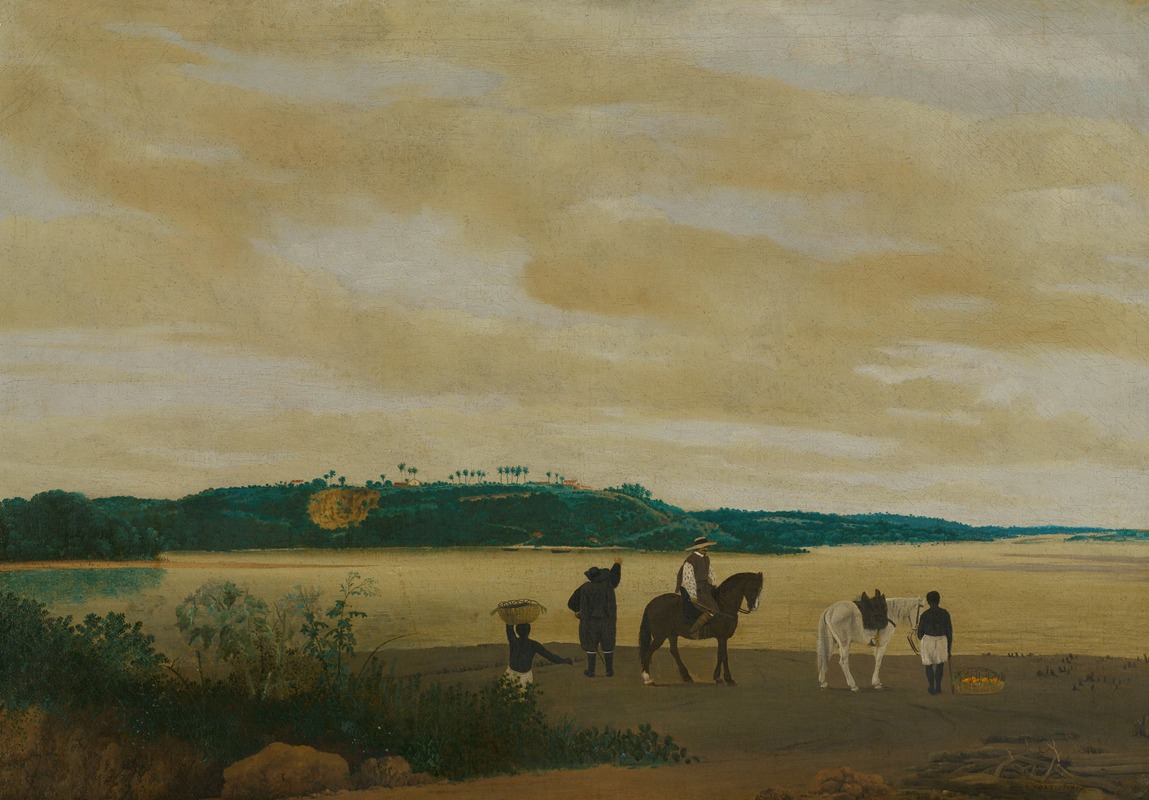
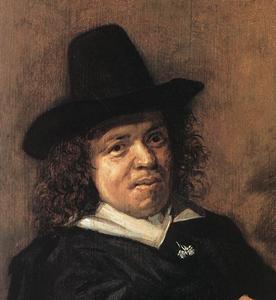
Frans Janszoon Post was a painter during the Dutch Golden Age. He was the first European artist to paint landscapes of the Americas, during and after the period of Dutch Brazil In 1636 he traveled to Dutch Brazil in northeast of South America at the invitation of the governor Johan Maurits van Nassau-Siegen. His works were widely collected in The Netherlands, Europe, and Brazil, with the works showing an idealized vision of Dutch colonial rule.
Post was born in Haarlem and was the son of Jan Janszoon Post, a highly regarded glass painter trained in Leiden, and Francijntje Verbraken of Haarlem. His elder brother was Pieter Post, one of the most important architects of Dutch classicism. Little is known of his life before his trip to Brazil.
He was born in Haarlem circa 1612 and he most likely received his early training from his father and his elder brother. He was a contemporary of Frans Hals, who painted his portrait, and prominent Haarlem landscape painters such as the brothers Jacob and Salomon van Ruysdael, Adriaen and Isaac van Ostade, and in particular Pieter de Molijn. It is likely that a Dutch master also taught him before he left for Brazil, though he was not registered in the guild until after his return. Although it is not universally accepted, Post scholar Erik Larsen believes De Molijn was the master under whom Post studied, because Molyn is mentioned in Houbraken as the teacher of several other landscape painters, such as Allart van Everdingen.
Post won a commission at court likely through the connections of his older brother and was encouraged to travel abroad by John Maurice, Prince of Nassau-Siegen. At the time, Haarlem experienced an outbreak of the plague, so that his going to Brazil may have seemed a good option. Post lived in Brazil from 1637 to 1644. He received 800 guilders for a landscape painting in the West Indies commissioned by Frederick Henry, Prince of Orange, leading Larsen to believe that Post set out for The Netherlands via Africa shortly before Nassau departed Brazil. After he returned to The Netherlands, he joined the Haarlem Guild of St. Luke in 1646, and was appointed officer in 1656–7 and 1658. In 1650, he married Jannetje Bogaert, the daughter of Professor Salomon Bogaert of the Haarlem ‘Latijnsche School’. He had two sons, who died before his death and one daughter that did survive him, but died shortly thereafter.
Post continued to paint Brazilian scenes until 1669, and the lack of dated paintings in the 1670s suggests he stopped ten years before his death. Whitehead and Boeseman claim that Post developed an alcohol problem, which may be the reason so little is known of the last decade of his life. He died in Haarlem and was buried in the St. Bavochurch on February 17, 1680.
